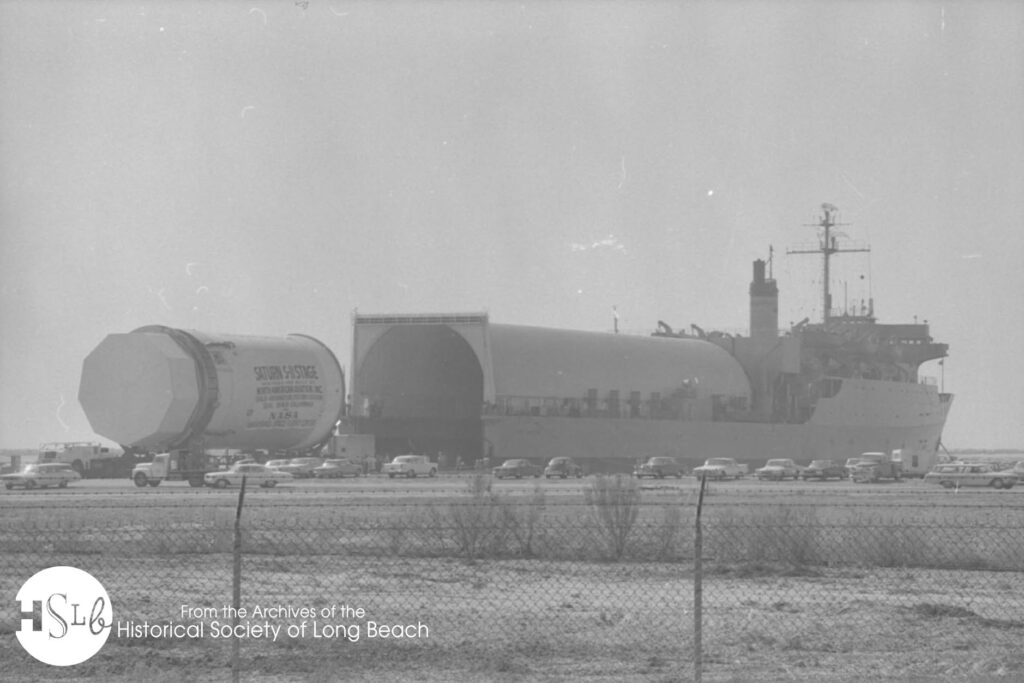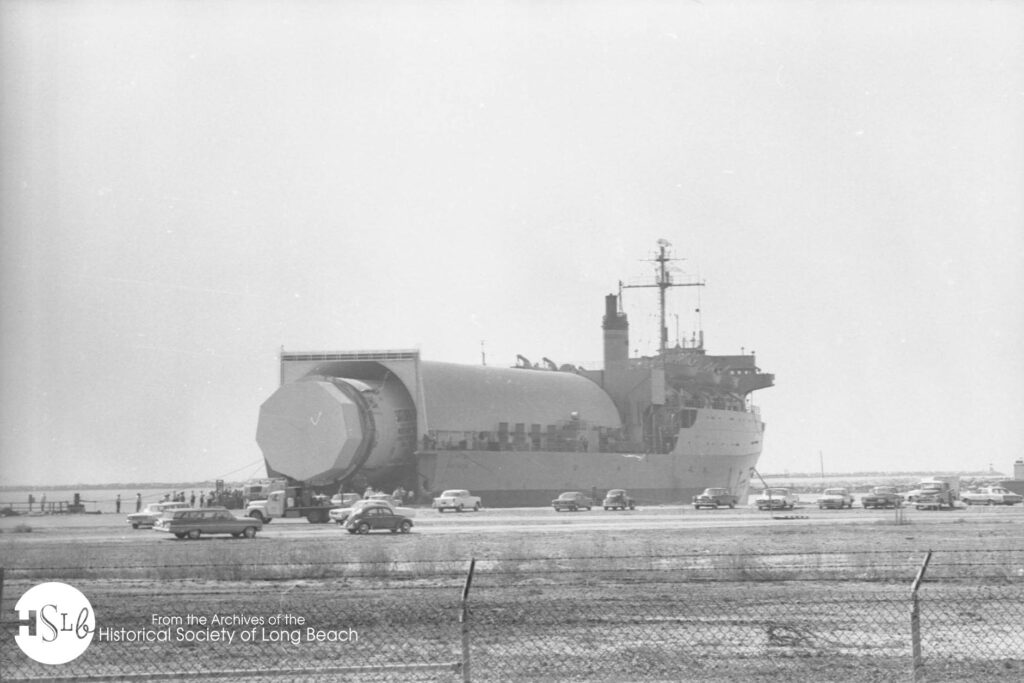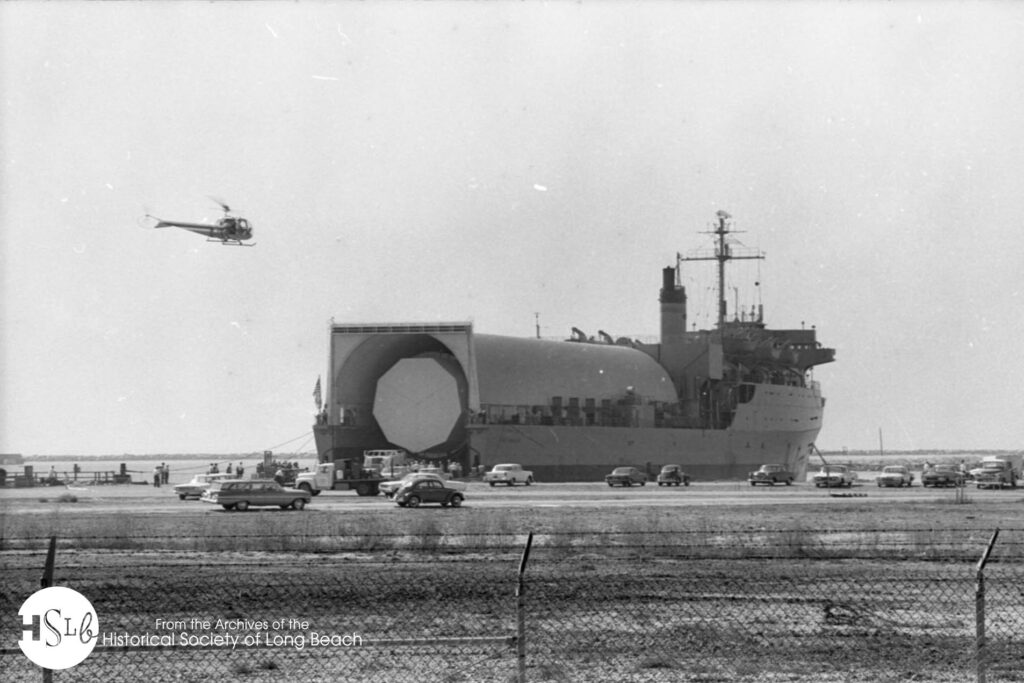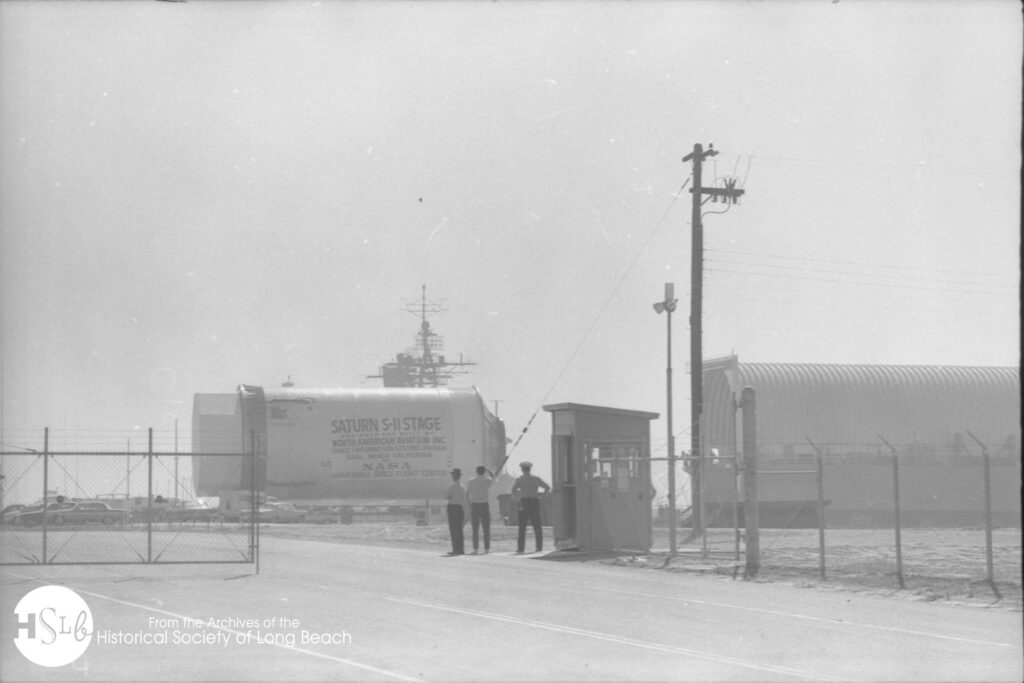
The very first Saturn V’s S-II Stage is transferred aboard the USS Point Barrow at Anaheim Bay for a trip through the Panama Canal to NASA’s Mississippi Test Facility.
By Brian Chavez
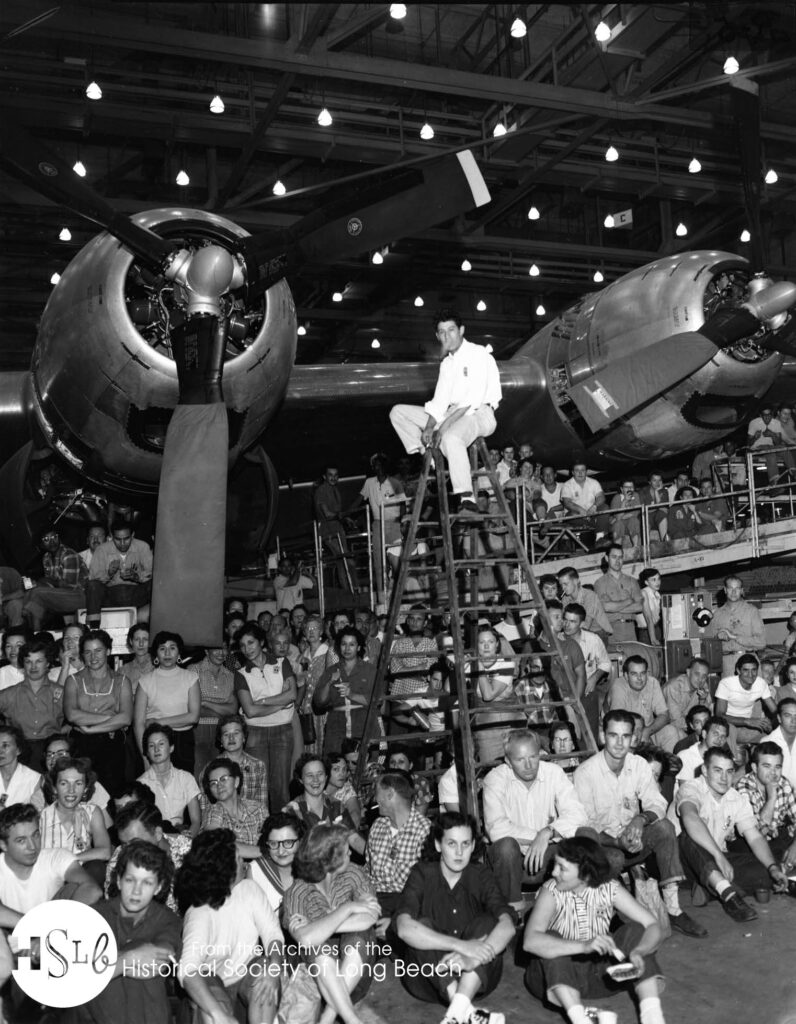
Many of us might remember the decommissioned Space Shuttle Endeavour’s final journey through the streets of Los Angeles to its new home at the California Science Center at Exposition Park. For several days in September and October 2012, the Endeavour blocked traffic and attracted spectators from near and far. However, the oddity of a space vehicle making its way down a boulevard is really not that odd for Southern California, in fact it is only natural for this historical stronghold of aerospace engineering.
On Friday, October 1, 1965 the first-completed S-II Stage (second stage) of the Saturn V rocket made its way out of North American Aviation’s Vehicle Assembly Building (VAB) on Westminster Avenue in Seal Beach for a 2-mile trip down Bay Boulevard (Seal Beach Boulevard) to the U.S. Naval Weapons Station docks. As the 82-foot long, 33-feet in diameter, and 83,800-pound empty rocket booster moved on roads primarily intended for terrestrial vehicles, crews on the ground redirected traffic and turned unique swiveling traffic lights to clear the way. Like the images of the Endeavour decades later, the S-II took up all four lanes of the two-way traffic boulevard, dwarfing the civilian cars that trailed behind it on the southbound lane and attracting local spectators to see a vital component of the rocket designed to put man on the Moon.
North American Aviation initially won the contract to build the components of the Saturn V in the fall of 1961. This came as President John F. Kennedy increasingly pressured the mobilization of American efforts in the Space Race with the ultimate goal of putting Americans on the Moon before the U.S.S.R. and the end of the decade. After several trials with Saturn rockets designed at Marshall Space Flight Center under the Apollo Program, the National Aeronautics and Space Administration (NASA) settled on the Saturn V to undertake the lunar mission. The Apollo Program’s technical components and space vehicles were a country-wide project, but no other place had as much an influence in the finished product as Southern California. Southern California’s aviation industry boomed after World War II as commercial flying grew in popularity and federal contracts for military and space projects flourished in the Cold War. North American, Douglas, and TRW Systems Group were among the many Southern California companies to receive contracts for the Saturn V and other Apollo projects. North American and Douglas conveniently built their new space facilities close to the U.S. Naval Weapons Station docks at the historic Anaheim Bay to easily load the completed Saturn V parts onto Navy barrages headed east to Mississippi and Florida.
The S-II Stage was not the only part of the Saturn V, but it proved to be one of the most challenging components built. In order to reduce the weight of the rocket as a whole, North American Aviation’s Space and Information Systems Division was tasked with creating a common bulkhead within the S-II designed to hold two cryogenic gasses at the same time while bearing a 126 ˚F difference. Just a few days before shipping the S-II to Mississippi, a water stress test burst the bulkhead creating a large boom that could be heard over a mile away. The employees at North American worked without a break through long nights in order to refit the booster with new materials that reinforced the slim wall between the liquid hydrogen kept at -423 ˚F and liquid oxygen kept at -297 ˚F. The very first second stage of the rocket was ready by the morning of October 1, 1965.
The five Rocketdyne J-2 engines at its rear were covered for protection. The booster then rode atop a large flat transporter driven at 5mph down Bay Boulevard to PCH. Once at Anaheim Bay it was loaded aboard the USS Point Barrow, a scene captured in the featured images by local photographer Joseph Risinger. The booster embarked on a 17-day voyage through the Panama Canal and up the Gulf of Mexico to NASA’s Mississippi Test Facility in Kiln for static-firing tests. Just a few years after the first S-II’s departure from the small Southern California harbor, the Saturn V landed humanity on the Moon on July 20, 1969.
